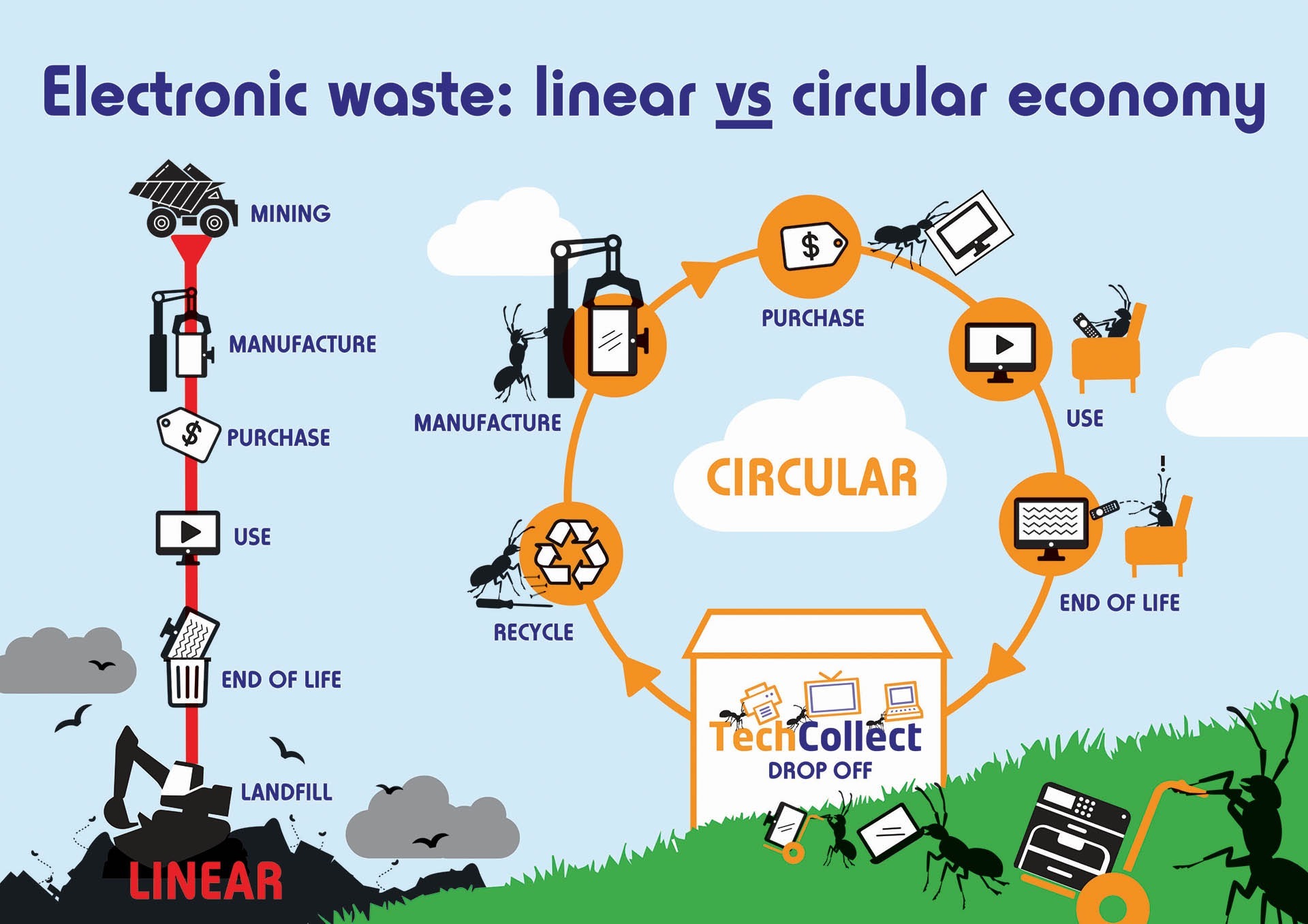
Where does your e-waste go after you drop it off at a free TechCollect site?
All e-waste that is dropped off at any TechCollect site is sent directly to our approved recycling partner network in Australia. Our recycling partners:
- ensure at least 90% of all materials recovered from the e-waste we collect and recycle are reintroduced as raw materials in the manufacture of new products
- operate to sound environmental and workplace health and safety standards
- undergo Independent Certification to ISO 14001 – the international benchmark for environmental management
- are certified to AS/NZS 5377: 2013 Collection, storage, transport and treatment of end-of-life electrical and electronic equipment
What is first stage recycling in Australia?
TechCollect’s Australian recycling partners complete the first stage of the e-waste recycling process. This involves the dismantling, shredding and sorting of electronic devices into various parts and materials including glass, metals, plastics, batteries, printed circuit boards and ink cartridges and toners.
These materials and parts are then sent to specialist processing facilities to undergo further processing. Some of these facilities are based in Australia but some are overseas. To ensure that collected e-waste is not illegally exported to developing countries we closely work with our recycling partners to track where these materials and parts are sent. These materials are sent to approved recycling facilities in Asia.
What happens during second stage recycling?
A number of Australian recyclers can perform second stage recycling where the separated materials and parts can be processed into new products.
In Australia, we currently have the infrastructure and end markets to recycle the following materials and parts into new products:
- glass from televisions and computer monitors
- ink and toner cartridges
- lithium ion batteries used in laptops
- select metals and plastics from computers, televisions and printers
Australia does not have the infrastructure in place to further process plastics, some metals and computer parts such as printed circuit boards, meaning they must be sent overseas for responsible recycling.
Downstream vendor due diligence and material traceability is a key priority for TechCollect. We check this through our annual mass balance audit over our Australian recycling partners as well as via independent audits conducted by ERM to ensure conformance to AS/NZS 5377:2013 and HSE legislation.
New products manufactured using your recycled e-waste
The following are examples of new products that can be manufactured in Australia from e-waste dropped off at a TechCollect site:
- Ink and toner cartridges from printers can be processed into asphalt used to create road surfaces
- Glass from televisions and computer monitors can be recycled and used in concrete building products
- Leaded glass from cathode ray tube televisions and computer monitors can be recycled into lead, which is used in batteries and various building materials
- Batteries from laptop computers can be processed to ensure metals and plastics can be separated out and used in new products. In Australia, the steel can be recycled into new steel products and the plastic is used to make asphalt. The graphene is sent overseas where it is used to make new batteries and the copper and aluminum is sent overseas for processing into metal alloys.
We are actively working to develop downstream end-markets in Australia
To encourage a circular economy, we are actively advocating for the development of local markets for recycling and for the use of recycled materials.
